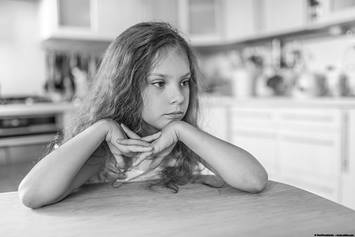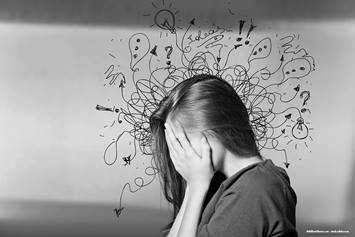Anxiety and Worry
Anxiety is a normal emotion. Some children are diagnosed with an anxiety disorder when there are changes in certain areas of their life. This can include school, work or with friends.
What Is Anxiety and Worry?
Anxiety is a normal emotion. It can cause feelings of fear, tension and worry. It can also cause physical changes in the body.
Anxiety is part of the body’s natural alarm system. A feeling of anxiety triggers the release of chemicals in the body. These chemicals can cause changes in heart rate, breathing, body temperature, muscles, nerves and make pain worse. Anxiety can also change how we think, feel and act.
Everyone feels anxiety. Some children are diagnosed with an anxiety disorder when there are changes in certain areas of their life. This can include school, work or with friends.
Signs and Symptoms
Symptoms of anxiety are different for each person. They can change with age and developmental level. Although symptoms may vary there are some common symptoms.
Younger Children:
- having trouble leaving caregivers
- show visible signs of being scared
- have trouble talking (shy)
- show physical symptoms: shaking, trouble breathing, fidgeting, racing heart
- may cry or get upset in new situations
- may argue or refuse to do something
- may want to leave or avoid events
- may get "butterflies" in the stomach, redness in the face, sweaty palms or dry mouth
Older Teens and Adults (all the Above Plus):
- feel worried about or dread events
- may ask to come home early from what should have been a fun event
- may refuse or avoid school, work and friends
- may worry and not be able to stop thinking about bad or scary things they cannot control
Anxiety can cause changes in sleep, activity level, eating habits and concentration. It may also result in substance use.
Anxiety can be linked to some long-lasting (chronic) conditions, including pain and neurological disorders.
Diagnosis
There are many types of anxiety disorders, including:
- generalized anxiety
- social anxiety
- anxiety from trauma
Anxiety disorders should be diagnosed and treated by a qualified medical or mental health professional.
Helping Your Child
When your child feels anxiety, here are some ways you can help:
- Remind your child they are safe if it is possible.
- Try simple ways to help them calm down, like deep breathing or slow muscle stretches. Physical exercise can also help.
- Talk often with your child about their feelings, including anxiety. This helps children understand and cope with difficult emotions.
- Encourage and support your child to slowly face their fears. Do things that are out of their comfort zone.
- Help your child take small steps forward. Do not let your child give up or avoid what makes them feel anxious.
- Praise your child for their efforts to cope with fears and worry.
- Listen and let your child know you understand, love and accept them with their anxiety. A caring relationship with you helps your child build resilience. Resilience helps your child recover quickly from hard situations.
- For additional resources log onto onoursleeves.org
Helping Hands Patient Education Materials
Written and illustrated by medical, nursing and allied health professionals at Nationwide Children's Hospital, Helping Hand instructions are intended as a supplement to verbal instructions provided by a medical professional. The information is periodically reviewed and revised to reflect our current practice. However, Nationwide Children's Hospital is not responsible for any consequences resulting from the use or misuse of the information in the Helping Hands.
HH-IV-241 ©2021, Nationwide Children’s Hospital



